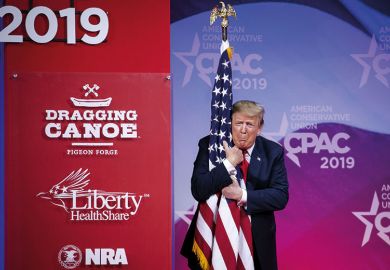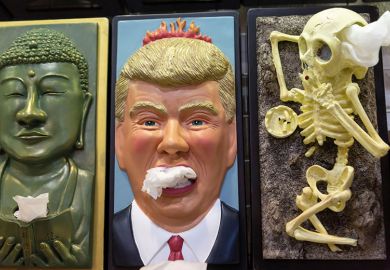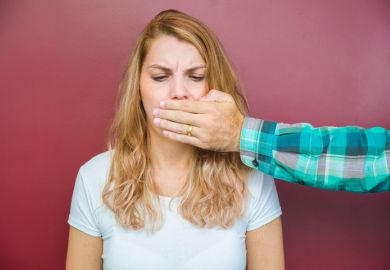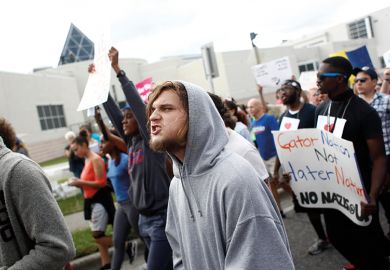Two weeks after promising to protect the right of conservative activists to speak openly on US college campuses, Donald Trump outlined an executive order that managed to both lack enforcement and alarm his ideological allies.
In a long and fiery address to a right-wing political assembly on 2 March, Mr Trump had promised to soon issue rules that would require colleges “to support free speech” on campus as a condition for continued federal research funding.
Mr Trump came forward with the order on 21 March. It demanded that federal agencies “take appropriate steps” to “promote free inquiry” on college campuses, but gave no details on how that would happen.
Even the suggestion of trying to either expand or limit political activity on college campuses was enough to upset colleges and lawmakers alike. The leading Republican in Congress on education policy, Lamar Alexander, reiterated the bipartisan anxiety that accompanied Mr Trump’s first mention of the idea.
“I don’t want to see Congress or the president or the department of anything creating speech codes to define what you can say on campus,” said Mr Alexander, chairman of the Senate’s education committee.
US presidents can set policy through executive orders, if they do not contradict existing law, and Mr Trump has made a habit of pushing the boundaries of them. But with legal precedents and the First Amendment of the US Constitution granting Americans a broad right to free speech within reasonable bounds of safety, college leaders and other experts see Mr Trump as having little room to actually change that reality on campuses or elsewhere.
The federal government spends some $35 billion (£27 billion) a year on university-based research, and the president gained attention over the past two weeks with his threat to use that money to force compliance on his “free-speech” agenda. But the reality, experts said, is that federal research expenditures require approval by Congress, and Mr Trump cannot unilaterally alter the amounts.
“I just don’t think there’s a lot” of levers available to Mr Trump to impose his will in the free speech arena, said Daniel Madzelan, associate vice-president for government relations at the American Council on Education, the leading US higher education lobby group.
In his 2 March appearance before the Conservative Political Action Conference, Mr Trump bemoaned an incident last month at the University of California, Berkeley in which a former student punched an activist recruiting for conservative causes. Mr Trump’s more long-standing grievance is a sense that US college campuses are fundamentally unfriendly to conservative points of view.
Despite the lack of enforcement powers, Mr Trump hosted an elaborate executive order signing ceremony in the East Room of the White House. There, he invited remarks by three students – from Miami University in Ohio, the University of Nebraska-Lincoln, and Northeast Wisconsin Technical College – who each described emotional confrontations as they promoted conservative causes on their campuses.
Mr Trump urged them to continue “challenging rigid, far-left ideology”.
Leading US college associations and groups that promote free speech policies, including the Foundation for Individual Rights in Education and PEN America, issued statements questioning the necessity of the executive order and saying it is too early to know what Mr Trump ultimately intends. “The order runs the risk of chilling more speech than it protects,” PEN America said in its statement.
Register to continue
Why register?
- Registration is free and only takes a moment
- Once registered, you can read 3 articles a month
- Sign up for our newsletter
Subscribe
Or subscribe for unlimited access to:
- Unlimited access to news, views, insights & reviews
- Digital editions
- Digital access to THE’s university and college rankings analysis
Already registered or a current subscriber?








